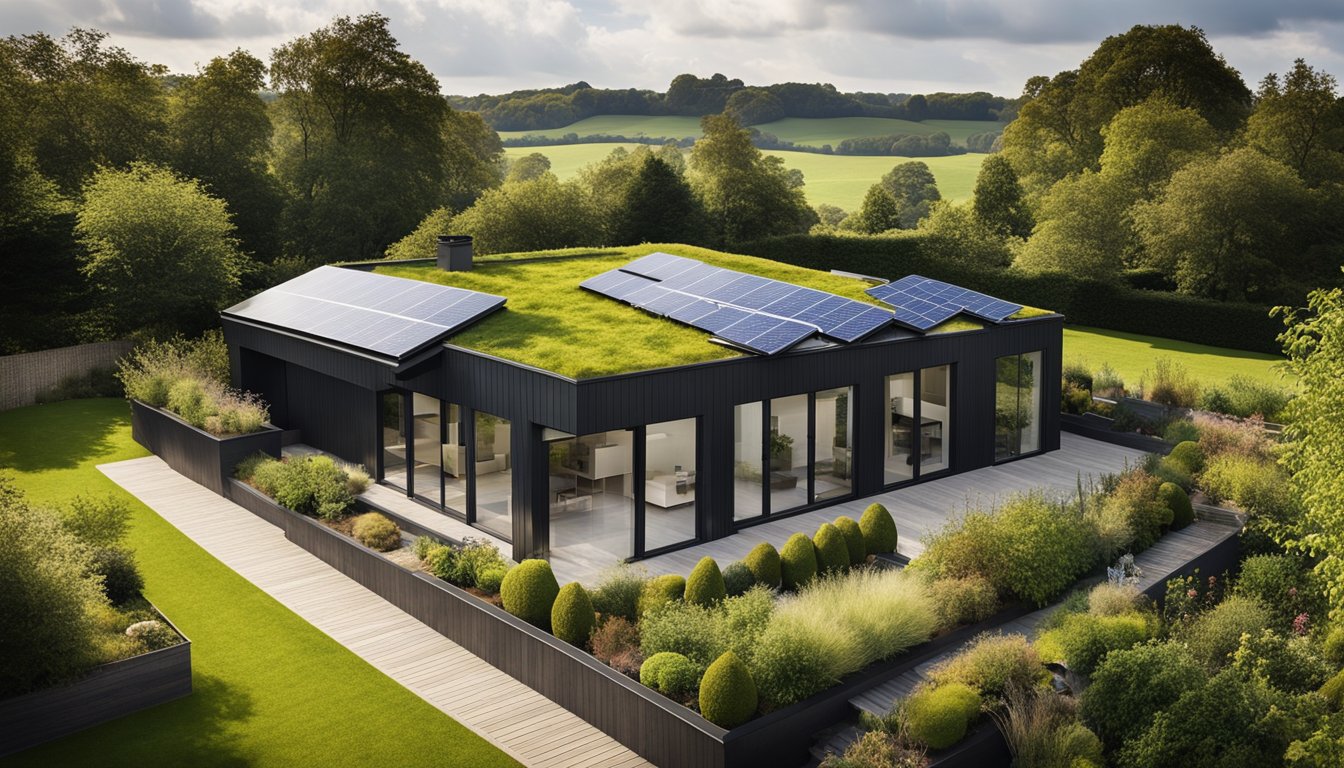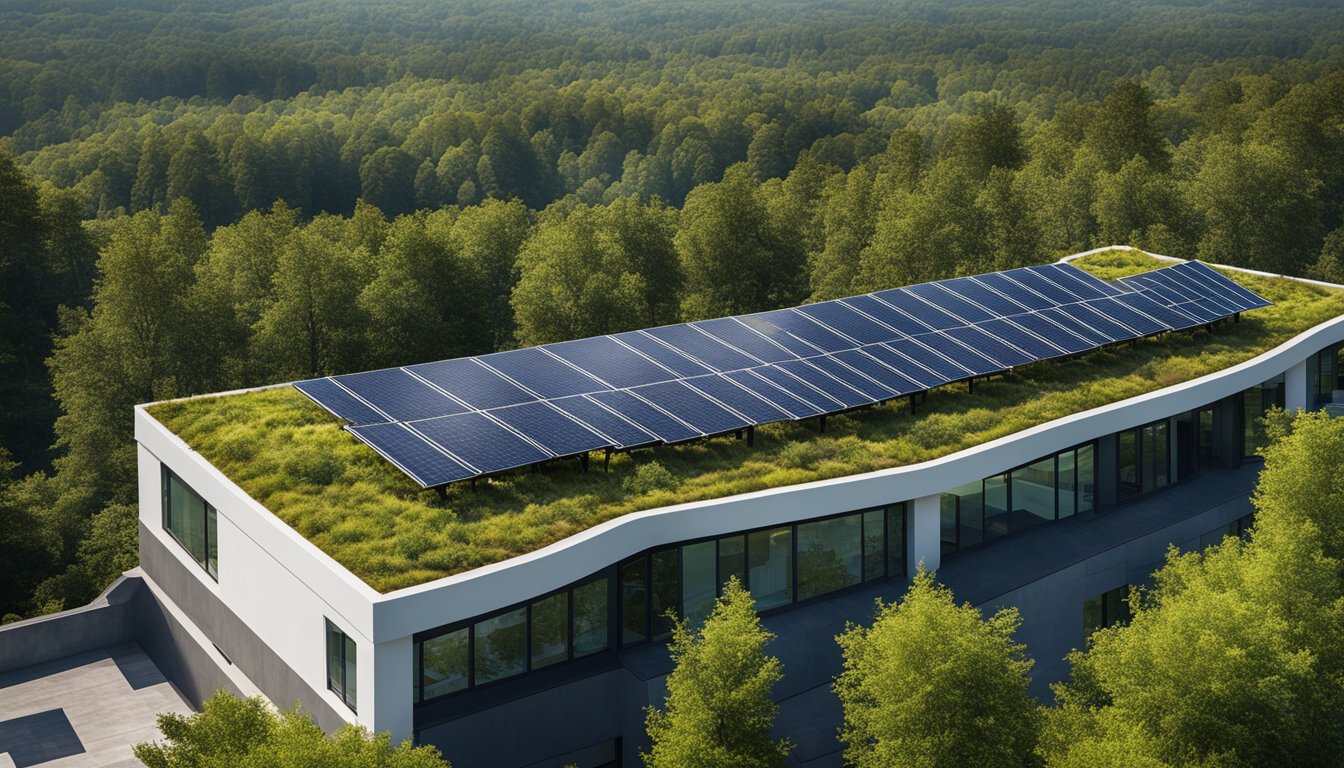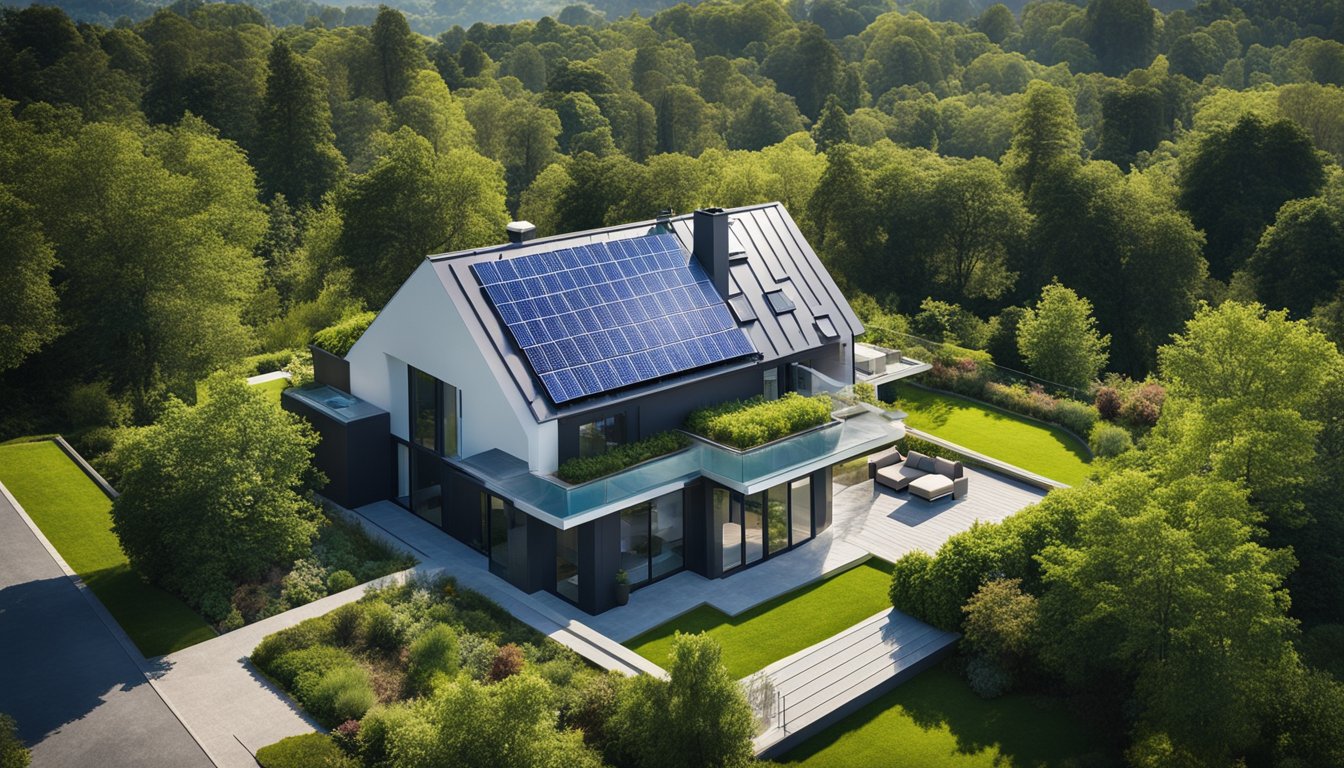Late updated: 24 Jul 2024 14:07
Written by: Oliver Bennett
Sustainable Roofing Options for UK Families: Eco-Friendly Choices for Your Home
In today's environmentally conscious world, families across the UK are seeking sustainable solutions for their homes, and roofing is a critical part of that equation. With options ranging from solar panels to eco-friendly materials like recycled metal and natural wool insulation, sustainable roofing not only reduces our carbon footprint but also impacts energy efficiency positively. Choosing the right sustainable roofing option can significantly lower energy bills and contribute to combating climate change.

Solar panels remain a popular choice for many homeowners due to their ability to generate renewable energy. Other options, such as metal roofing made from recycled materials, offer durability and reflect solar heat, helping to keep homes cooler and reducing the need for air conditioning. Green roofs, featuring plants and vegetation, provide natural insulation and improve air quality.
These eco-friendly choices are not only beneficial for the environment but are also financially advantageous in the long term. As we navigate the various options, understanding the benefits and drawbacks of each can help UK families make informed decisions about their roofing solutions.
Key Takeaways
- Sustainable roofing options can lower energy bills and combat climate change.
- Choices include solar panels, recycled metal roofing, and green roofs.
- Each option offers unique benefits in terms of durability and energy efficiency.
Understanding Sustainable Roofing
Sustainable roofing focuses on using eco-friendly materials and energy-efficient designs to create roofs that are both durable and have minimal environmental impact. It involves choosing materials that reduce carbon footprint and enhance insulation.
The Basics of Sustainable Roofing
Sustainable roofing aims to balance durability, cost-effectiveness, and environmental benefits. Materials such as clay, concrete, and metals are popular due to their longevity and low environmental impact.
Clay tiles offer natural insulation and are abundant, while concrete requires less fuel in production. Metals can be recycled and have a long lifespan.
Insulation plays a crucial role as well. Natural wool and recycled materials ensure better energy retention, reducing overall energy consumption.
Benefits of Eco-Friendly Roofing Materials
Using eco-friendly roofing materials brings multiple benefits. Firstly, it reduces energy costs. Efficient insulation keeps homes warmer in winter and cooler in summer, minimizing the need for artificial heating and cooling.
Secondly, these materials lower the carbon footprint. By using recycled or natural materials, we reduce greenhouse gas emissions, contributing to a healthier environment.
Finally, certain roofing options, like green roofs with vegetation, improve air quality by filtering pollutants and absorbing rainwater.
Factors Affecting Roofing Sustainability
Several factors influence the sustainability of roofing. Climate plays a significant role; materials must be chosen based on local weather conditions to ensure durability. For example, metal roofs are ideal for areas with heavy rainfall, whereas clay tiles might be better for warmer regions.
The choice of roofing material impacts sustainability. Opting for long-lasting, recyclable materials like metals and concrete ensures minimal environmental damage.
Maintenance and lifespan matter, too. Regular upkeep can extend the life of a roof, reducing the need for new materials and construction in the long run.
Proper insulation improves energy efficiency, reducing overall energy consumption and costs.
Popular Sustainable Roofing Types

For families in the UK looking to adopt sustainable roofing solutions, several options can help improve thermal efficiency, energy savings, and environmental impact. Below, we explore living roofs, metal and recycled material roofs, and other innovative solutions.
Living Roofs and Green Roofs
Living roofs, also known as green roofs, are covered with vegetation and soil, or a growing medium. These roofs provide significant benefits including improved insulation and reduced urban heat island effect. They also enhance biodiversity by providing habitats for various species.
Green roofs can help manage stormwater by absorbing rainfall, reducing the runoff that reaches drainage systems. Additionally, they offer a natural aesthetic appeal and can extend the lifespan of the underlying roof materials by shielding them from UV radiation.
Metal and Recycled Material Roofs
Metal roofs, including those made from steel and aluminium, are valued for their durability and recyclability. These materials can last over 50 years and are fully recyclable at the end of their life. Metal roofs reflect solar radiant heat, reducing cooling costs and energy use.
Roofs made from recycled materials, such as reclaimed wood or recycled plastic, also offer sustainable benefits. These materials reduce waste and often have a lower environmental footprint compared to new materials. Combining these elements with proper insulation can further enhance energy efficiency.
Other Innovative Roofing Solutions
Solar panels are a prominent example of innovative sustainable roofing. By converting sunlight into electricity, they provide a renewable energy source that can significantly cut down on electricity bills and grid dependence. Solar panel integration on roofs is an excellent step towards energy-efficient homes.
Additionally, there are sustainable options like clay, concrete, and slate. Clay and slate are durable and can be repurposed or allowed to decompose naturally. Concrete requires less fuel for production and has a long lifespan. Each of these materials offers unique benefits in terms of longevity, thermal efficiency, and sustainability.
Frequently Asked Questions

Sustainable roofing options for UK households involve various materials, cost considerations, energy efficiency, and compliance with building regulations. Below, we address some of the most common questions regarding sustainable roofing solutions.
What are the top sustainable roofing materials for homes in the UK?
The most popular sustainable roofing materials include solar panels, green roofs, recycled materials, and natural products like slate tiles and clay. Each material offers unique benefits in terms of durability, energy savings, and environmental impact.
How do green roofs contribute to sustainability in UK home construction?
Green roofs help improve air quality, reduce urban heat island effects, and provide natural insulation, lowering energy costs. They also absorb rainwater, minimising runoff and reducing the risk of flooding. Furthermore, green roofs support biodiversity by providing habitats for various plants and insects.
What are the initial and long-term costs associated with installing a sustainable roof on a UK home?
Initial costs can vary significantly depending on the chosen material and the complexity of the installation. For example, solar panels may have a higher upfront cost but can offer substantial energy savings over time. Long-term costs generally involve minimal maintenance and potential savings on energy bills, making sustainable roofs cost-effective in the long run.
Which sustainable roofing systems offer the longest lifespan for UK households?
Materials like slate tiles and clay can last over 100 years with proper maintenance. Solar panels typically have a lifespan of 25-30 years. The longevity of a roofing system depends on the quality of installation and regular upkeep.
How do UK building regulations impact the choice of sustainable roofing?
UK building regulations require that roofing materials meet specific standards for fire resistance, insulation, and structural integrity. Sustainable roofing options must comply with these regulations to ensure safety and performance. Additionally, certain sustainable materials may qualify for government incentives and grants, making them more attractive to homeowners.
What are the most energy-efficient roofing options available to UK families?
Solar panels and green roofs are among the most energy-efficient options. Solar panels generate renewable energy, reducing reliance on the grid. Green roofs provide excellent insulation, which helps reduce heating and cooling costs. Combined, these options can significantly enhance a home’s energy efficiency.
